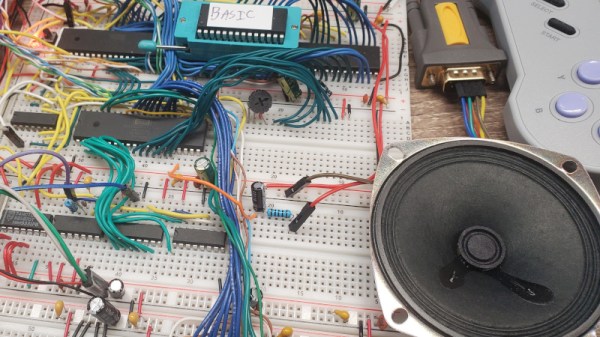In the days of 8-bit home computing, the more fancy machines had sound chips containing complete synthesizers, while budget machines made do with simple output ports connected to a speaker — if they had anything at all. [Normal User] appears to be chasing the later route, making PCM sound by abusing the serial port on a 6522 VIA chip.
A serial port is when you think about it, a special case of a one-bit output port. It’s designed for byte data communication but it can also carry a PCM data stream. We’ve seen this used with microcontrollers and peripherals such as the I2S port plenty of times here at Hackaday, to produce such things as NTSC video. The 1970s-spec equivalent might not be as fast as its modern equivalent, but it’s capable of delivering audio at some level. The machine in question is a Ben Eater breadboard 6502 with a World’s Worst Video Card, and as you can hear in the video below the break, it’s not doing a bad job for the era,
If you think this hack sounds a little familiar then in a sense you’re right, because Ben Eater himself made noises with a 6522. However it differs from that in that he used the on-board timers instead. After all, the “V” in “VIA” stands for “versatile”.
Continue reading “2025 Component Abuse Challenge: The VIA Makes Noise, Again”


















